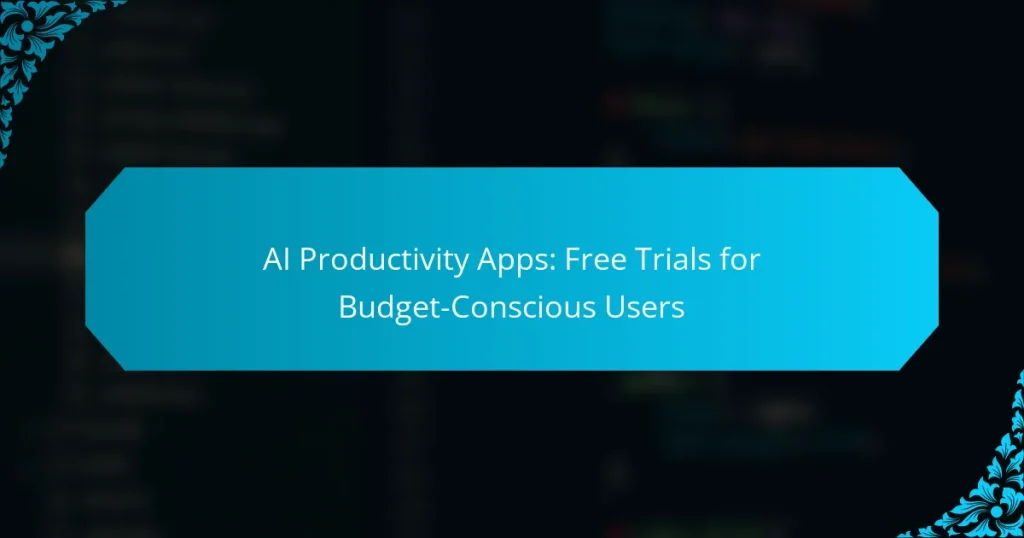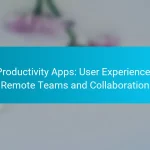For budget-conscious users, many AI productivity apps offer free trials that allow exploration of their features before making a financial commitment. These trials, typically lasting from a week to a month, provide an excellent opportunity to evaluate the software’s value and determine its fit for your specific needs and workflow.
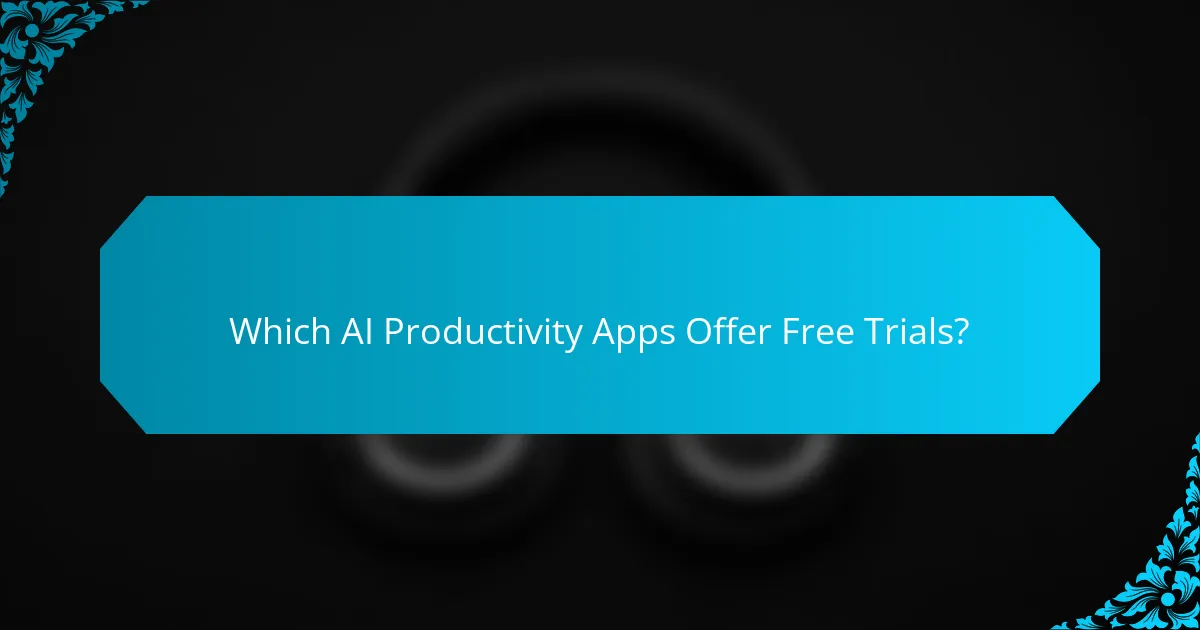
Which AI Productivity Apps Offer Free Trials?
Many AI productivity apps provide free trials, allowing users to explore features before committing financially. These trials typically range from a week to a month, giving budget-conscious users the opportunity to assess the value of the software.
Notion
Notion offers a free trial that allows users to experience its full suite of features for 30 days. This versatile tool combines note-taking, task management, and database capabilities, making it suitable for individuals and teams alike.
During the trial, users can create unlimited pages and collaborate with others, which is ideal for testing its functionality in real-world scenarios. After the trial, users can choose from various pricing tiers, including a free version with limited features.
Trello
Trello provides a free trial of its premium features for 14 days, allowing users to explore advanced functionalities like automation and integrations. Trello’s card-based system is user-friendly, making it easy to manage tasks and projects visually.
After the trial, users can continue using the basic version for free or upgrade to a paid plan for additional features. It’s advisable to evaluate how the premium features can enhance your workflow during the trial period.
Todoist
Todoist offers a free trial of its premium version for 30 days, which includes features such as task labels, reminders, and productivity tracking. This app is designed for personal task management, making it easy to organize daily activities.
Users can assess how the premium features improve their productivity and decide whether to continue with the paid subscription or stick with the free version, which still provides essential task management capabilities.
Asana
Asana provides a 30-day free trial of its premium features, which include timeline views, advanced reporting, and custom fields. This project management tool is well-suited for teams looking to enhance collaboration and track project progress effectively.
During the trial, users can invite team members to collaborate, making it a good opportunity to test its capabilities in a team setting. After the trial, Asana offers a free version with limited features, which can still be useful for smaller projects.
ClickUp
ClickUp offers a free trial that lasts for 14 days, giving users access to its comprehensive project management features. This app combines task management, time tracking, and goal setting, making it a robust option for both individuals and teams.
Users can explore ClickUp’s customizable features during the trial to determine how well it fits their workflow. After the trial, ClickUp has a free version with essential features, making it a flexible choice for budget-conscious users.
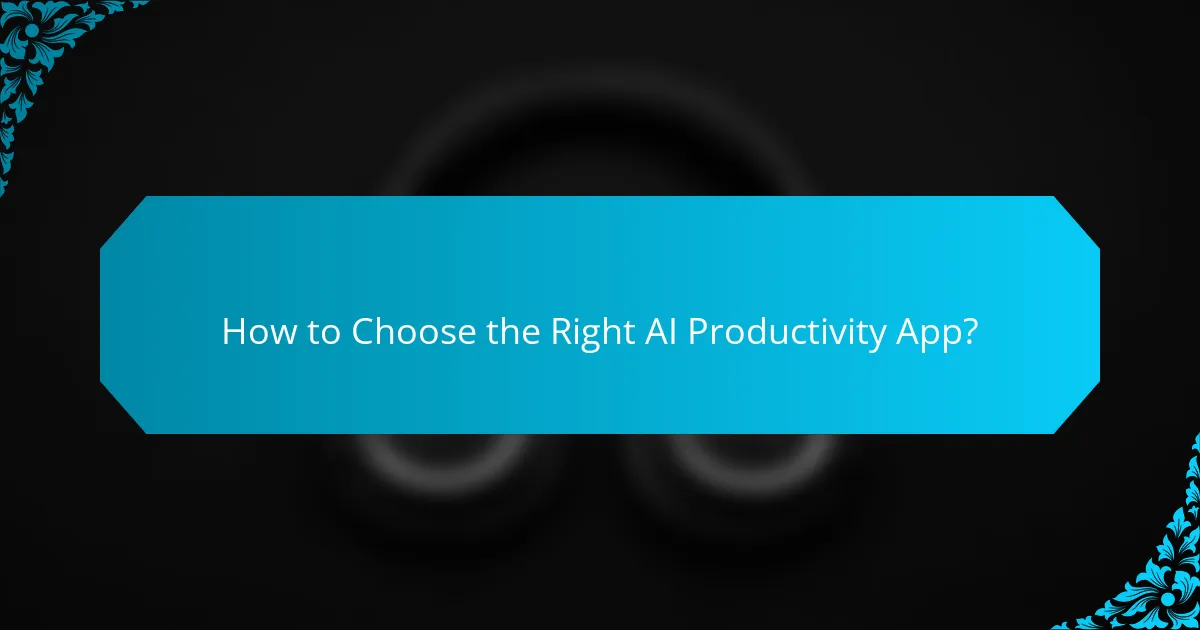
How to Choose the Right AI Productivity App?
Choosing the right AI productivity app involves evaluating its features, user interface, and integration capabilities. Focus on what aligns best with your specific needs and workflow to maximize efficiency and effectiveness.
Evaluate features
Start by identifying the core features that are essential for your tasks. Look for functionalities like task automation, scheduling, collaboration tools, and data analysis capabilities. Prioritize apps that offer features tailored to your industry or specific use cases.
Consider creating a checklist of must-have features versus nice-to-haves. This can help you narrow down options and avoid unnecessary expenses on apps that don’t meet your needs. For example, if you require advanced reporting, ensure the app provides robust analytics tools.
Consider user interface
The user interface (UI) plays a crucial role in how effectively you can use an AI productivity app. A clean, intuitive design can enhance your workflow, while a cluttered or confusing UI may hinder productivity. Test the app’s interface during the free trial to see if it feels comfortable and easy to navigate.
Look for customization options that allow you to tailor the UI to your preferences. A well-designed app should enable you to quickly access essential features without unnecessary clicks or distractions, making your daily tasks more manageable.
Assess integration capabilities
Integration capabilities determine how well the AI productivity app works with other tools you already use. Check if the app can seamlessly connect with your email, calendar, and project management software. This can save time and reduce the need for manual data entry.
Evaluate the number of third-party integrations available. A versatile app should support popular platforms and services, allowing for a more cohesive workflow. If you rely on specific tools, ensure the app you choose can integrate with them effectively to enhance overall productivity.
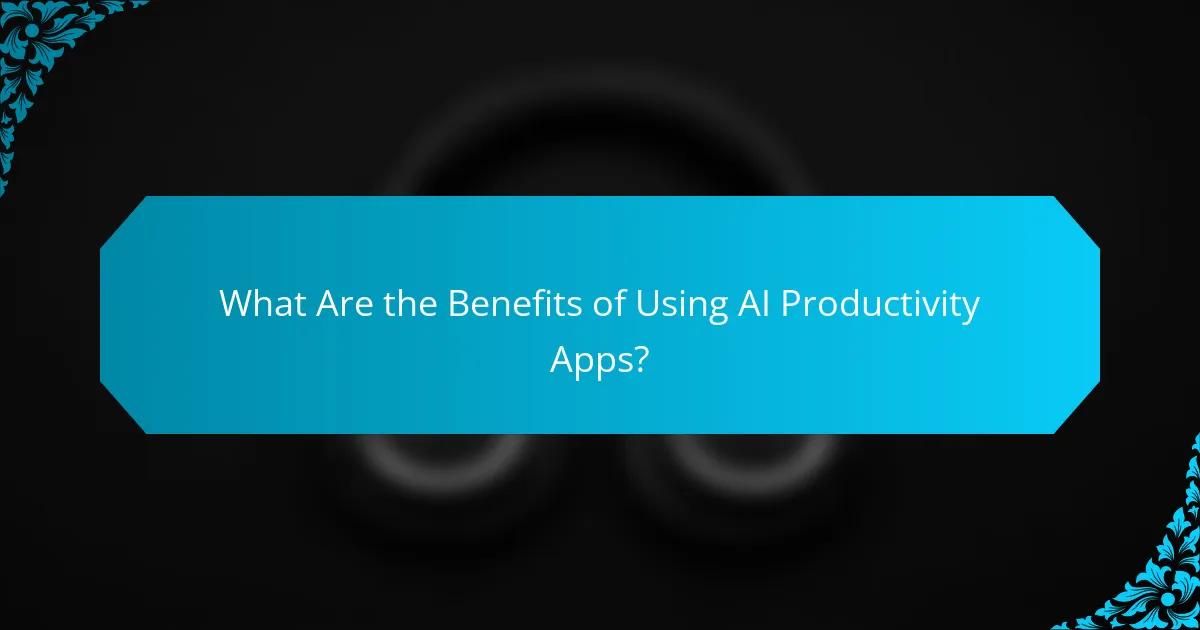
What Are the Benefits of Using AI Productivity Apps?
AI productivity apps offer significant advantages by streamlining workflows, enhancing team collaboration, and automating repetitive tasks. These tools are particularly beneficial for budget-conscious users seeking to maximize their efficiency without incurring high costs.
Increased efficiency
AI productivity apps can significantly boost efficiency by automating routine tasks and providing intelligent suggestions. For instance, tools like task managers can prioritize your to-do list based on deadlines and importance, helping you focus on what matters most.
By integrating with existing workflows, these apps can reduce the time spent on mundane activities, allowing users to accomplish more in less time. Many apps offer free trials, enabling users to test features and determine which tools best enhance their productivity.
Enhanced collaboration
Collaboration is improved through AI productivity apps that facilitate real-time communication and project management. Features such as shared documents, instant messaging, and video conferencing allow teams to work together seamlessly, regardless of location.
Using these tools can lead to better alignment on project goals and quicker decision-making. Budget-conscious users should look for apps that offer collaborative features at no cost during trial periods to assess their effectiveness for team dynamics.
Task automation
Task automation is a key benefit of AI productivity apps, allowing users to set up workflows that handle repetitive tasks automatically. For example, email sorting, data entry, and scheduling can be automated, freeing up time for more strategic activities.
When selecting an app, consider those that offer customizable automation features, which can adapt to your specific needs. Many platforms provide free trials, enabling users to experiment with automation capabilities before committing financially.

How Do Free Trials Work for AI Productivity Apps?
Free trials for AI productivity apps allow users to test premium features without any upfront cost for a limited time. These trials typically last from a few days to a month, giving users the opportunity to evaluate the app’s effectiveness before committing to a subscription.
Duration of free trials
The duration of free trials for AI productivity apps can vary significantly, generally ranging from 7 to 30 days. Some apps may offer extended trials during promotional periods, while others might have shorter trial windows to encourage quick decisions. Always check the specific terms for each app to understand how long you can access the trial.
Access to premium features
During a free trial, users usually gain full access to premium features that are otherwise locked behind a paywall. This includes advanced functionalities such as enhanced collaboration tools, additional storage, or specialized AI capabilities. Make sure to explore all features available during the trial to assess the app’s value effectively.
Cancellation policies
Cancellation policies for free trials can differ by app, so it’s crucial to read the fine print. Some apps automatically convert to a paid subscription if not canceled before the trial ends, while others may allow you to cancel at any time without penalty. To avoid unexpected charges, set a reminder to cancel if you decide not to continue using the app.
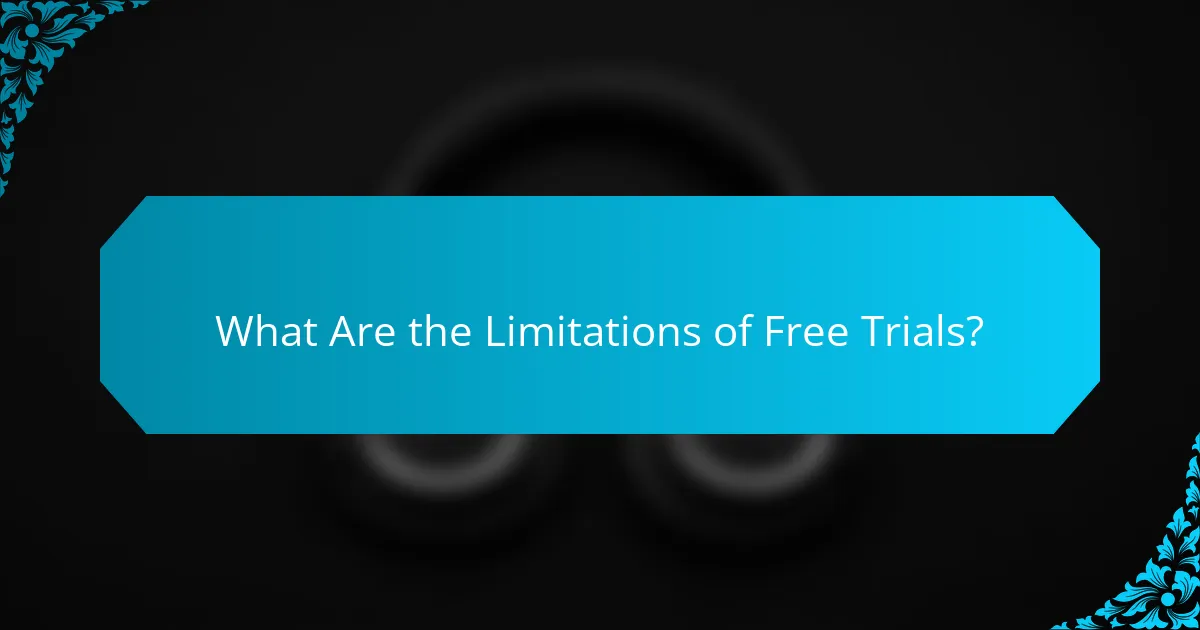
What Are the Limitations of Free Trials?
Free trials often come with specific limitations that can affect user experience and decision-making. Understanding these constraints helps users make informed choices about whether to invest in a full subscription.
Restricted features
Many free trials offer limited access to features compared to the full version. Users might find that essential tools, integrations, or advanced functionalities are locked, which can hinder their ability to fully evaluate the app’s capabilities.
For example, a productivity app may allow access to basic task management but restrict features like collaboration tools or analytics. This limitation can skew user perception of the app’s overall value.
Time constraints
Free trials typically have a set duration, often ranging from a week to a month. This time limit can pressure users to quickly assess the software, potentially leading to rushed decisions.
Users should plan their trial period strategically, ensuring they allocate enough time to explore all relevant features and assess how well the app fits their needs. Setting reminders can help avoid last-minute evaluations.
Potential upselling
During or after a free trial, users may encounter aggressive upselling tactics. Companies often use this strategy to convert trial users into paying customers, which can be overwhelming.
Be cautious of frequent prompts to upgrade or purchase additional features. It’s advisable to evaluate whether the offered benefits justify the cost before committing to a subscription, and to compare similar apps to ensure you’re getting the best deal.
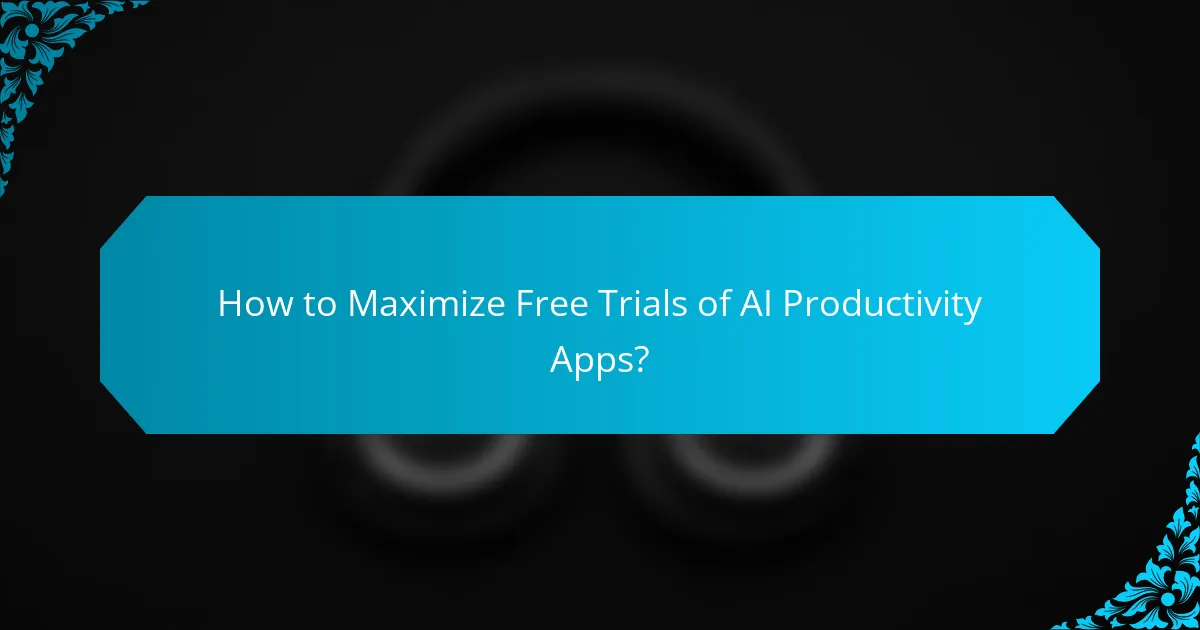
How to Maximize Free Trials of AI Productivity Apps?
To maximize free trials of AI productivity apps, focus on defining your needs and utilizing the trial period effectively. This involves setting clear objectives, exploring features thoroughly, and assessing the app’s value against your requirements.
Set clear goals
Establishing clear goals is essential for making the most of your free trial. Identify specific tasks or outcomes you want to achieve with the app, such as improving task management, enhancing collaboration, or automating repetitive processes.
Break down your goals into measurable targets. For example, aim to reduce project completion time by a certain percentage or increase team productivity by a specific number of hours per week. This clarity will help you evaluate the app’s effectiveness.
Regularly assess your progress against these goals during the trial. If you find that the app is not meeting your expectations, consider adjusting your approach or exploring alternative solutions before the trial ends.
